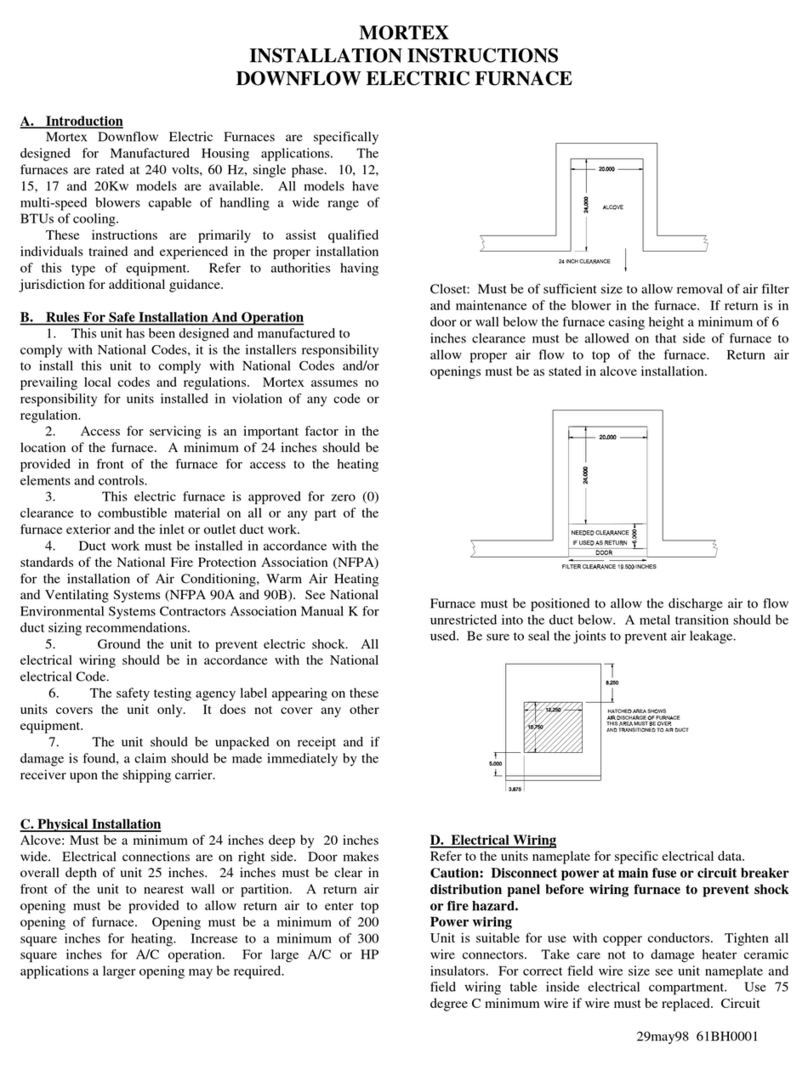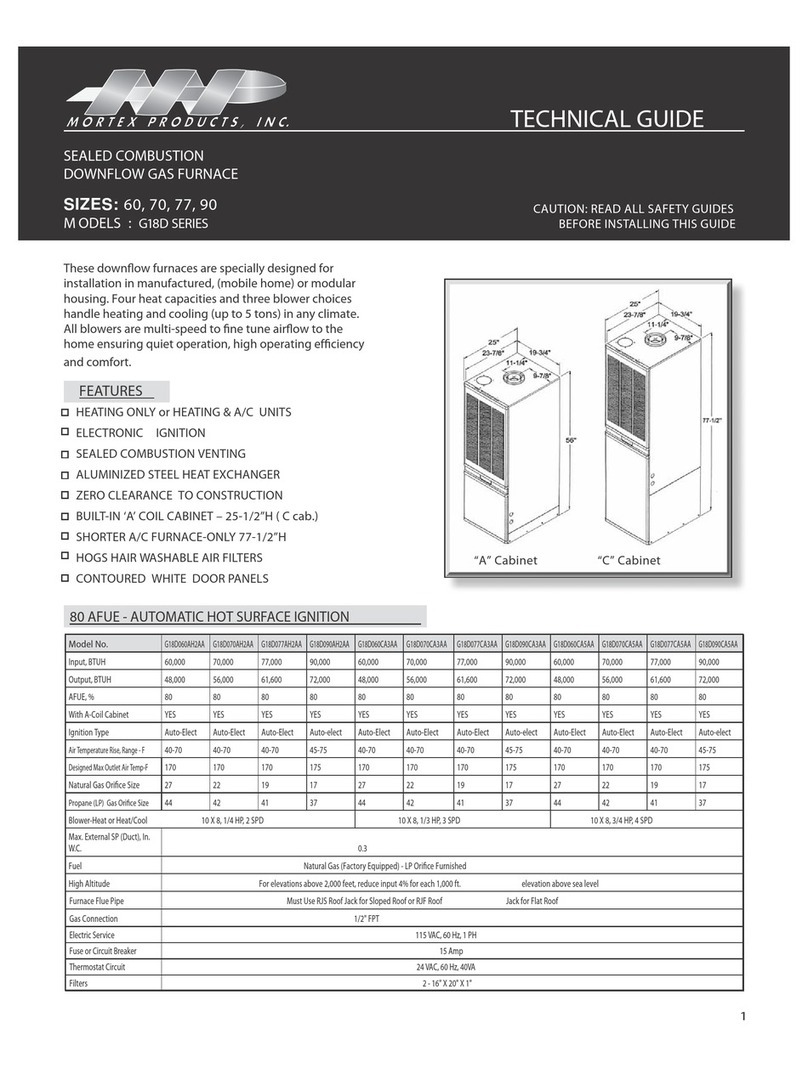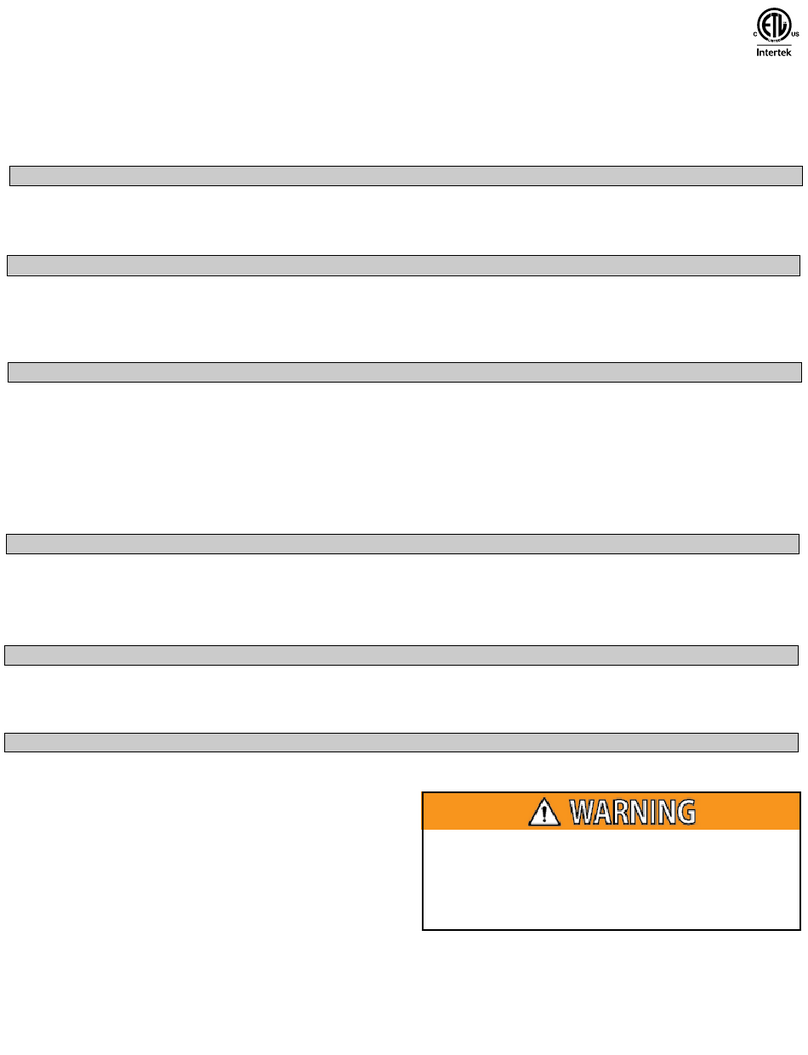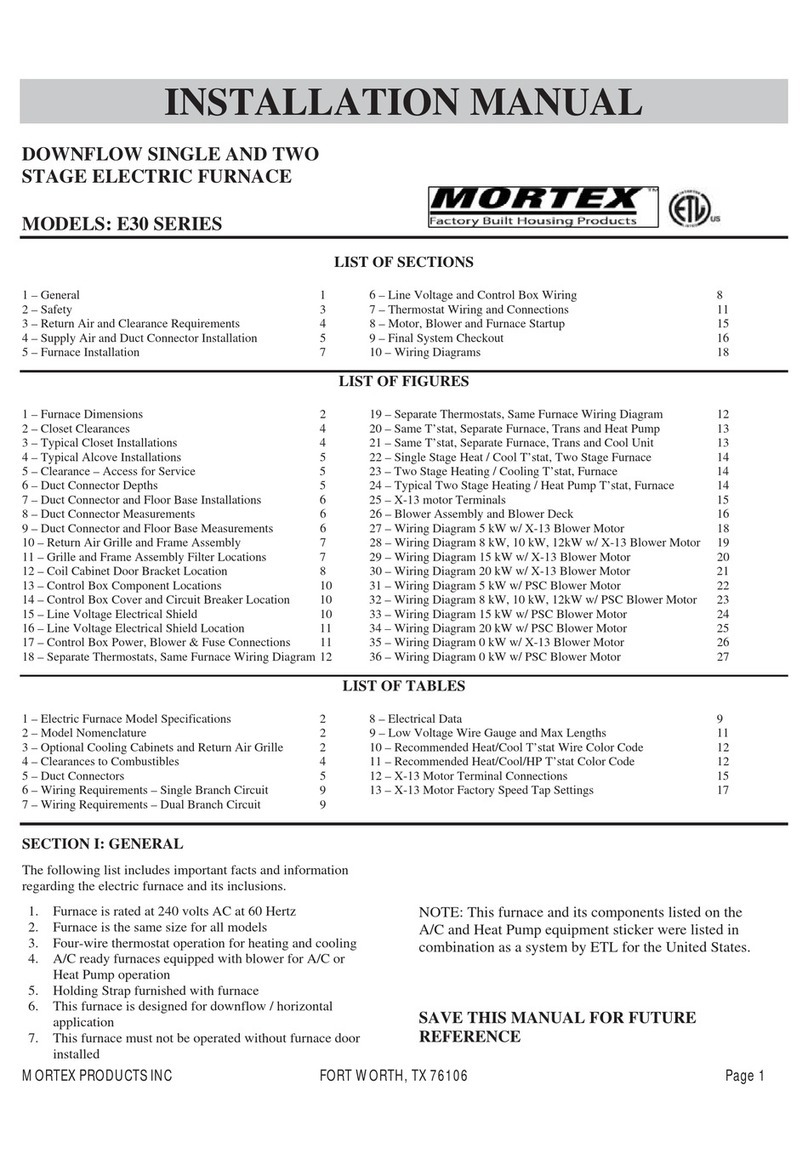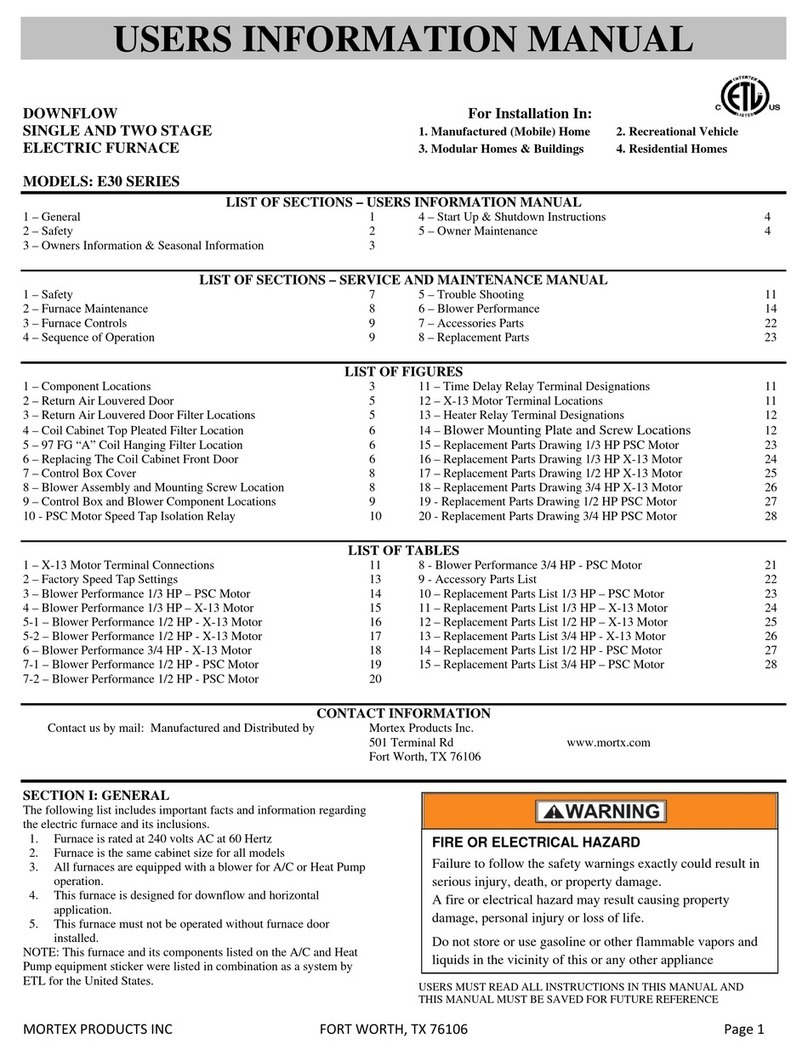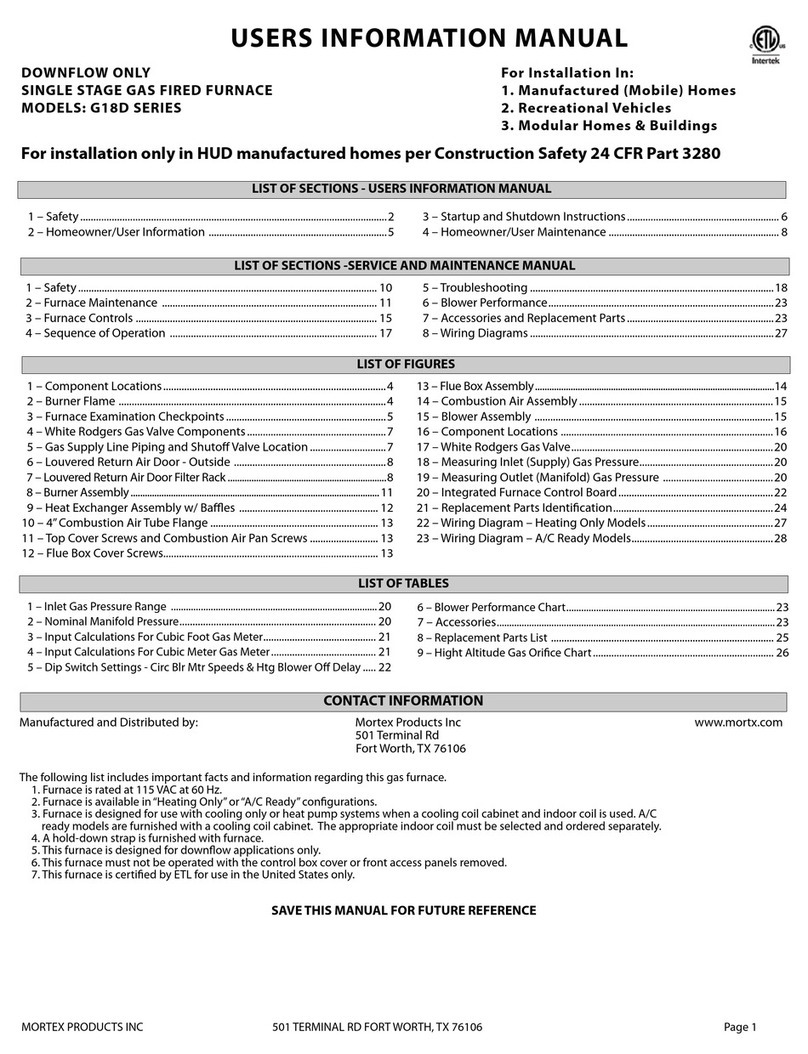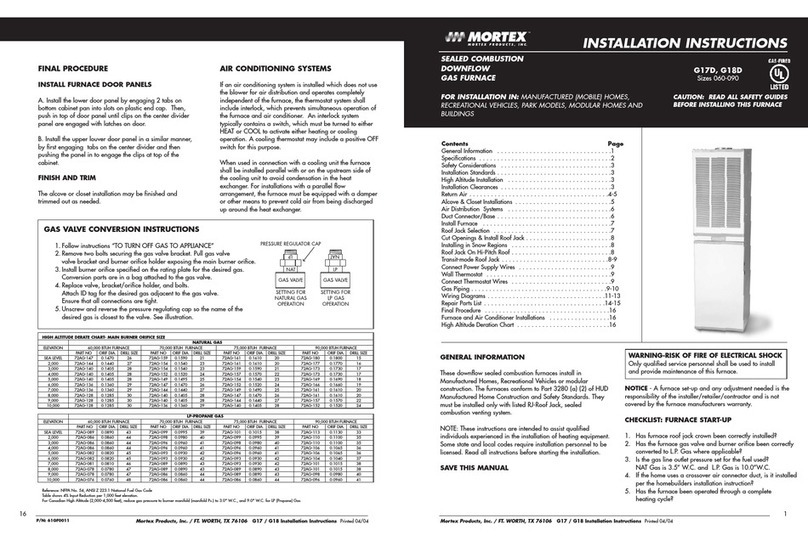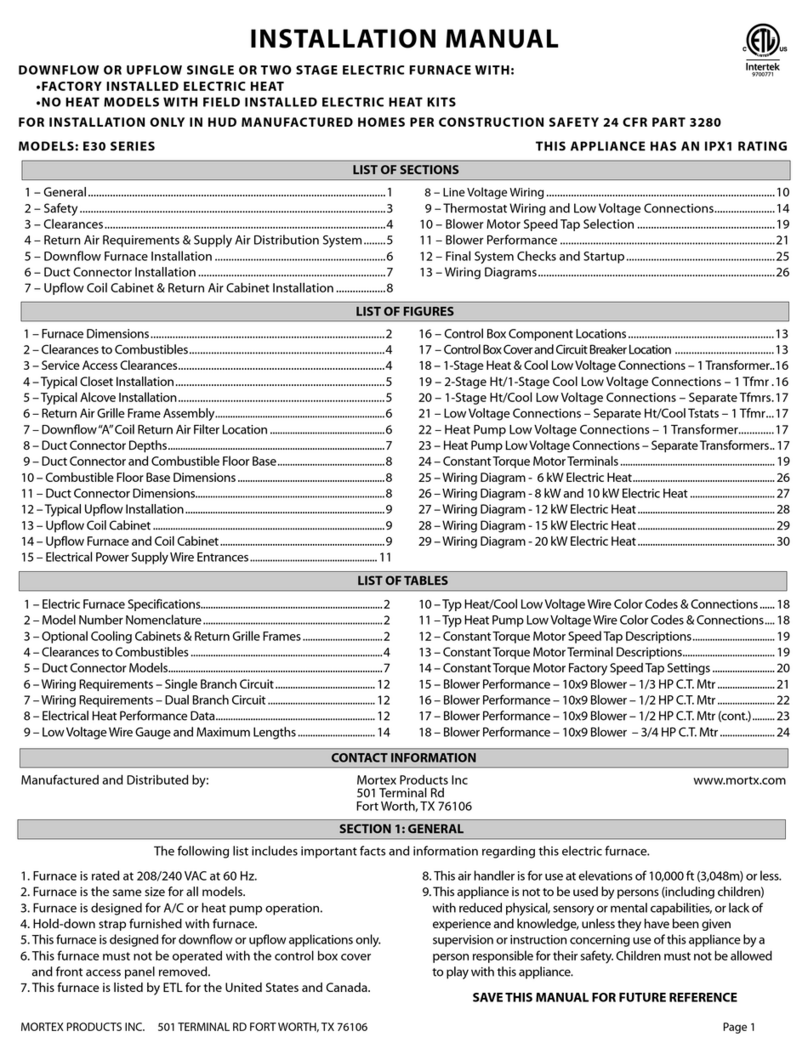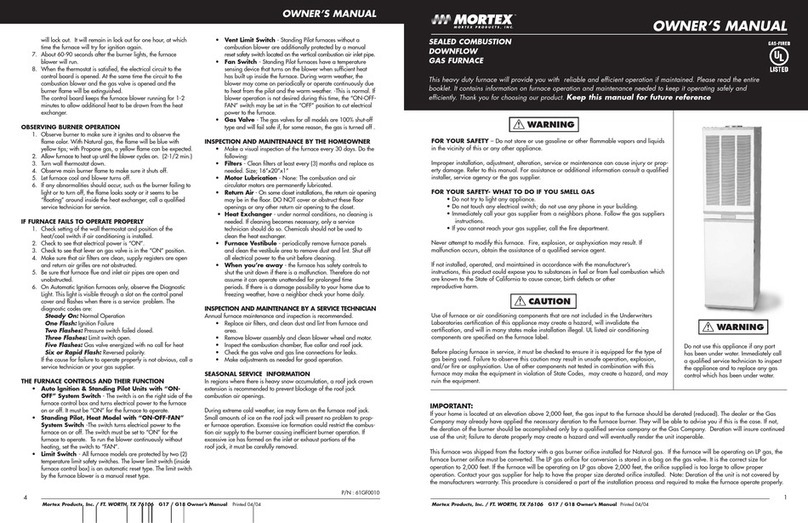
MORTEXPRODUCTSINCFORTWORTH,TX76106Page6of22
3. Failure to carefully read and follow all instructions in this
manual can result in malfunction of the furnace, personal
injury, property damage and / or loss of life.
4. If the furnace is installed in a residential garage it must be
installed so that the electric heaters are located not less than
18 inches above the floor and the furnace must be located or
protected to avoid physical damage by vehicles.
5. These instructions cover minimum requirements and
conform to existing national standards and safety codes. In
some instances these instructions exceed certain local codes
and ordinances, especially those who have not kept up with
up with changing construction practices. These instructions
are to be followed and are the minimum requirement to
perform service or repairs on this appliance.
The Service Technician
The furnaces best friend is a qualified service technician. If the
unit gives any indication of improper operation, call the service
technician. The service technician is allowed to perform the
normal routine care of your furnace. He can detect potential
problems and make corrections before trouble develops.
Preventative maintenance of this type will allow the furnace to
operate with minimal concerns to the home owner and will add
years of comfort.
Warranty and Responsibilities
It is the sole responsibility of the home owner to make certain the
furnace has been properly installed and adjusted to operate
properly.
The manufacturer warrants the furnace to be free from defects in
material or workmanship for a stated time in the warranty
agreement. The manufacturer will not be responsible for any
repair costs to correct problems due to improper setup, improper
installation, improper furnace adjustments, adding parts that are
not listed for use with this furnace, improper operating
procedures by the user, ECT.
Some specific examples of service calls which will be excluded
from warranty reimbursement are:
1. Correcting faulty duct work in the home. This can be due to
not enough ducts or ducts are too small to provide proper air
flow through the furnace.
2. Correcting wiring problems in the electrical circuit to the
furnace.
3. Resetting circuit breakers or on/off switches used for
servicing.
4. Furnace problems caused by installation and operation of
any air conditioning unit, heat pump, or other air quality
devise which is not approved for use with this furnace.
5. Adjusting or calibrating the thermostat.
6. Problems caused by construction debris which has fallen
into the furnace.
7. Replacement of fuses.
8. Problems caused by dirty air filters.
9. Problems caused by restrictions in the return or supply air
flow causing low air flow.
The home owner should establish a firm understanding of these
responsibilities with the installer or service company so there no
misunderstanding at a later time.
While you are away
The furnace is equipped with safety shutoff devices which will
shut off the gas burner in case of a malfunction. For this reason it
is never practical to assume the furnace will operate unattended
for a long period of time.
If you are planning to be away from home for a long period of
time have someone check on your home everyday epically when
the outside temperatures will be below 35°F to ensure the
furnace is operating properly. This may prevent water pipes from
freezing.
When to Call For Service Assistance
Very often time can be saved if you give a service agency the
information about the furnace ahead of time. This will enable the
service agency to determine the specific components used and
possibly indentify the problem, thus arriving with the parts to fix
the problem.
SERVICE AGENCY INFORMATION
Fill in Below
COMPANY:
ADDRESS:
TELEPHONE (DAYTIME):
TELEPHONE (EMERGENCY)
SECTION III: STARTUP AND SHUTDOWN
INSTRUCTIONS
STARTUP AND SHUTDOWN INSTRUCTIONS
Read the instructions below before trying to start the furnace.
A. This appliance does not have a pilot. It is equipped with an
ignition device which automatically lights the burner. Do not
try to light the burner by hand.
B. BEFORE OPERATING; smell all around the appliance area
for gas. Be sure to smell next to the floor because some gas
is heavier than air and will settle on the floor.
C. Use only your hand to push the gas control switch to the
“ON” position. Never use tools. If the switch will not
operate by hand, don’t try to repair it. Call a qualified
service technician. Force or attempted repair may result in a
fire or explosion.
D. Do not use this appliance if any part has been under water.
Immediately call a qualified service technician to inspect the
appliance and replace any part of the control system and any
gas control which has been under water.
Operating Instructions
1. STOP! Read the safety information above and the Lighting
Instruction Label located on Burner Compartment Door.
2. Set the thermostat to the lowest setting.
3. Turn off all electric power to the appliance.
4. Remove furnace door.
5. Move gas control switch to the “OFF” position. Do not
force. See Figure 4 for switch location.
6. Wait (5) five minutes to clear out any gas. If you then smell
gas, STOP! Follow “B” in the safety information above. If
you do not smell gas, go on the next step.
7. Move gas control switch to the “ON” position. Do not force.
See Figure 4 for switch location.
If you do not follow this instruction exactly, a fire
or explosion may result causing property damage,
personnel injury, and / or loss of life.
